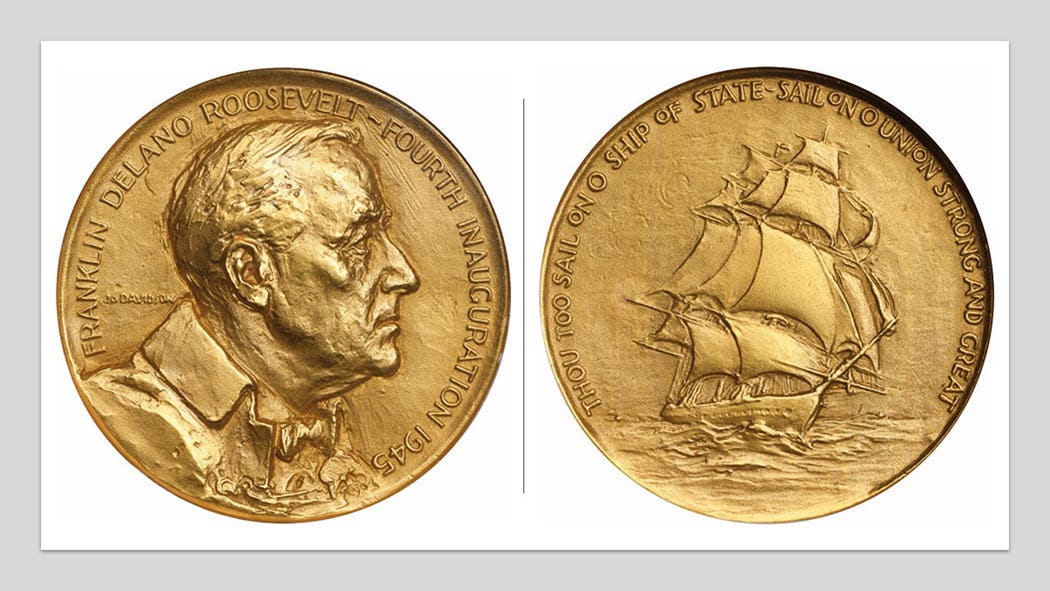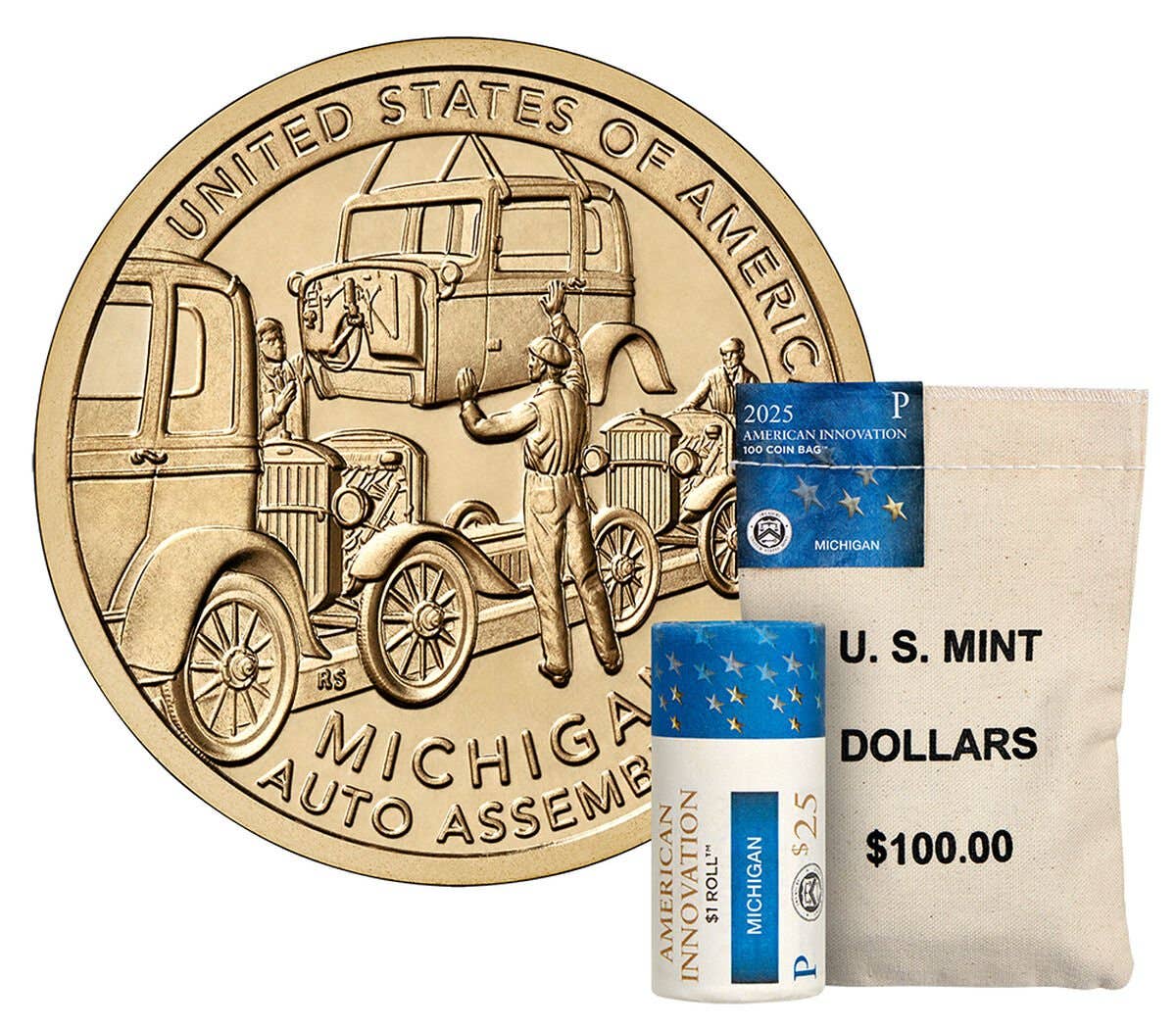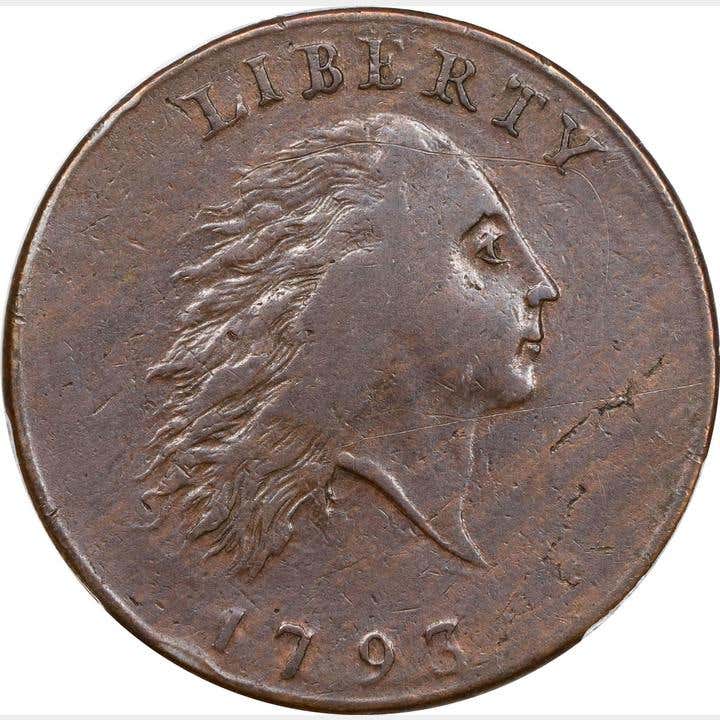Stacking Gold in 2021
This investment option provides the best of both worlds: high bullion content and collector value.
If you're a coin collector, chances are good that you have some bullion coins along with the coin series you're working on. Perhaps you're concerned with the world's various problems, such as changing climate, civil unrest, a raging pandemic, burning forests, interminable wars, etc. I suspect that you've thought about what you might do to give yourself some peace of mind.
As a coin person, one thing you can do is to "stack" silver or gold. I found the following statement online in a link to the website of Gainesville Coins: "Stacking silver or gold is a method of accumulating silver or gold bullion in physical form. Most stackers plan on holding onto their metals for long-term gains. Physical gold and silver are generally available in the form of coins, rounds, and bars (or ingots)."
But what form is your stacking going to take? If you have a fairly limited budget for stacking, you'll probably want to focus on silver in its various forms because it's much less expensive than gold.
But what if you can afford to put a couple of thousand a month into your stacking and you're committed to purchasing gold bullion in coin form? In this article, I'm going to tell you about an investment vehicle that gives you both high bullion content and collector value. To me, this option provides the best of both worlds.
Now, you may be leaning toward the U.S. bullion programs, such as American Eagle coins that have the Saint-Gaudens double eagle design on the obverse and a landing eagle on the reverse. Or, you may prefer American Buffalo bullion coins, the ones that reprise James Earle Fraser's classic designs on both obverse and reverse. Both of these programs offer the coins in various denominations and various amounts of gold bullion.
Although there are collectors who work on sets of these bullion coins, they don't have the tried and true collector value of the coins I'm going to suggest. In my opinion as an observer and participant in the U.S. coin scene for the past 65+ years, you can't go wrong stacking Liberty Head and Saint-Gaudens double eagles.
At one of the last coin shows I attended, I heard Scott Travers, author of The Coin Collector's Survival Manual and several other best-selling coin books, touting the purchase of MS63 Liberty Head double eagles. At the time, I wasn't in the market for MS63 double eagles, but I could see why he was recommending them.
They are large gold coins containing nearly an ounce of gold (.96750 oz. to be exact). As I write this, gold is worth $1,850 an ounce, which means that each double eagle contains $1,790 worth of gold. Let's look at some of the coins you might want to add to your gold stack.
The designer of the Liberty Head double eagle was James B. Longacre, who is perhaps best known for his Indian Head cent design. Remember the "L" on the 1864 pointed bust bronze cent? That's for Longacre.
Longacre was born in 1794 and became the fourth Chief Engraver for the U.S. Mint on September 16, 1844, when he was 50 years old. He assumed the Chief Engraver mantle following the death of the previous Chief Engraver, Christian Gobrecht. During his quarter century as Chief Engraver, Longacre designed all three versions of the one dollar gold piece, the three dollar gold piece, and the Liberty Head $20 gold piece.
In addition, he was responsible for the Flying Eagle cent, the Indian Head cent, the two cent piece, both the silver and nickel three cent pieces, and the Shield nickel. While still employed by the Mint, Longacre died on New Year’s Day in 1869. He, in turn, was replaced by his friend, William Barber, not to be confused with his son, Charles Barber.
I looked on eBay to see what Liberty Head double eagles are offered there. If you're stacking these as bullion plays, then you'll want to purchase the least expensive certified coins with no problems. In this way, you'll get the bullion value with some numismatic potential. I found quite a few Buy It Now sales for random dates in a particular grade.
The grades all seemed to be low mint state, MS61 or MS62 and sometimes MS63. Prices for the random dates were mostly between $2,110 and $2,150. $2,110 is 18% more than the melt value, whereas $2,150 is a markup of slightly more than 20%.
Specific dates in the same range of grades were a bit more expensive, mainly selling for between $2,250 and $2,500. $2,250 is nearly 26% more than the bullion value, whereas $2,500 is a little less than 40% over melt.
As for which dates were offered, the ones I noted, with some repetition, were 1875-S, 1891-S, 1896, 1899, 1904, 1904-S, and 1907. What do these dates have in common? With one exception, they all had mintages of more than a million pieces. The exception is the 1896, which had a mintage of nearly 800,000. About this date, David Bowers wrote in A Guide Book of Double Eagle Gold Coins, "The 1896 is another date that is plentiful in Mint State, in this case MS-60 to MS-63. . . ."
I did find the sale of a 1902-S for $2,375, with the seller listing the coin as RARE. Bowers' comment about this high-mintage date: "The 1902-S is abundant in AU through MS-63 grades thanks to massive imports, most of which occurred since the mid-1990s." I suspect that the date was rare before the massive influx arrived. Another possibility is that this is just dealer hyperbole.
I searched eBay for AU Liberty Head $20 gold pieces and found quite a few for sale. For some reason, they seemed to be priced higher than the mint state coins I had searched. Instead of being scarcer dates, they were all common dates, typically with mintages over a million and with values appropriate for common dates.
When I looked for XF double eagles, I found several listings. The least expensive for random years was priced at $2,081. This is a little more than 16% over melt.
I suspect that if you went to a large coin show (remember those?) you could find graded XFs and AUs priced closer to their bullion values. Alternatively, if you live in a large city with coin shops, they might be better venues for what you're seeking.
Final thought on the Liberty Head double eagles: There are many common dates, although they're not listed on eBay. I suspect that the coins sold in the random date offerings are common dates that I didn't find in the single date sales. If you look at the pricing guide in this magazine, you'll see that of all the dates listed in the last 20 years of the series, only six date/mintmark combinations are premium coins.
Of course, Liberty Head double eagles aren't the only U.S. coins minted in this denomination. There are also coins bearing Saint-Gaudens' almost universally applauded design. These are called, appropriately enough, Saint-Gaudens double eagles or simply Saints. Saints were minted from 1907 to 1933. Of course, if you're buying to stack large bullion pieces, there are several dates that almost no one can afford. Obviously, their bullion value is irrelevant.
If you look at this magazine's pricing guide, you'll see that there are many dates that are valued at $2,040 in XF40. Between 1908 and 1920, there are only two dates (1908-S and 1909/8) that are not priced as common dates. One of these, the 1908-S, had the lowest mintage of any regularly issued Saint! There are also several common dates in the 1920s, including most of the Philadelphia issues through 1928.
I checked on eBay and found that the listings I noted for the Liberty Head double eagles are similar to those for Saints. Specifically, the sales of random years are generally less expensive than the single date sales. Also, in single date sales, the same dates appear time after time, with the 1908 No Motto being perhaps the most common. About this coin, Bowers wrote, "The 1908 No Motto is far and away the most plentiful Type 5 [no motto] double eagle, with, perhaps, 200,000 Mint State coins in existence."
Random date offerings began at $2,093 for NGC coins and $2,098 for PCGS Saints. These amounts are about 17% over the bullion value. Single date sales prices began at $2,098 for a 1908 NM graded MS62 by NGC.
As for the different dates, I found all of the Philadelphia issues from 1922 through 1928, with only a few mint marked issues for sale in the lower-priced Saints I looked at. These were 1909-S, 1913-D, and 1914-S. The 1909-S and 1914-S both had mintages north of a million, whereas the 1913-D had a mintage of 393,500.
All three coins were graded by NGC, and their prices were $2,100, $2,280, and $2,250, respectively. The 1909-S was in XF45 condition, which probably explains its lower price, as all three dates are common. Although the 1913-D has a much lower mintage, it's still a date you can acquire easily, according to Bowers.
Bottom line: If you have the money to spend, it's quite possible to stack common-date double eagles. With them, you have a winning combination: a large amount of bullion value with some collector value. That's hard to beat!








